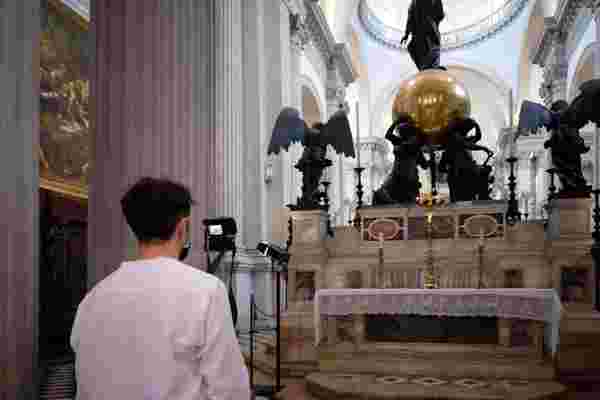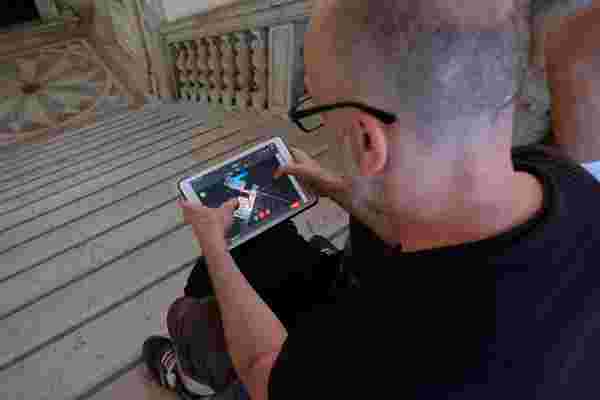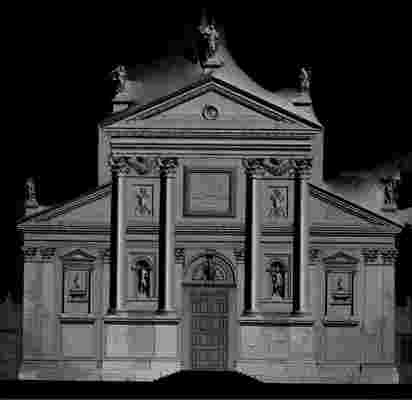Cutting-Edge Technologies Are Being Used to Help Save Venice
During the flooding of Venice last November, it was impossible to tell where the Adriatic Sea ended and the city began. The deluge pushed the water over six feet above sea level, amounting to the highest tide in the city in more than 50 years, and the second highest ever recorded. St. Mark’s Square turned into a lagoon. Hotel windows became aquariums, and tourists—the ones who stayed—were forced to traipse across makeshift bridges to see the sights. Standing in front of the choppy waters submerging St. Mark’s Basilica, the city’s mayor laid the blame squarely on climate change . And many climatologists would agree: It’s a crisis so severe that if little is done, a vulnerable Venice could be uninhabitable by 2100 .
In the aftermath of the floods, the city’s growing precarity took on a new level of urgency for Adam Lowe, founder of the Factum Foundation , a nonprofit dedicated to the use of digital technology for cultural heritage conservation. “Venice has a twofold problem,” Lowe says via Zoom from his foundation’s headquarters in Madrid. “One issue is that the city is sinking because of the removal of the water from the aquifers—and the way the city was structured—and the other is that the sea level is rising in unpredictable ways.”

Adam Lowe and his team have spent the summer digitally capturing the makeup of Venice’s San Giorgio Maggiore.
In an effort to gird Venice for an inevitable climate change transformation, Lowe worked with a team this summer on an ambitious project to digitally capture images of every building—inside and out—on Venice’s San Giorgio Maggiore, an island that sits just across the water from St. Mark’s Square and is home to a famous 16th-century church designed by Andrea Palladio.
“We thought if Venice is under so much threat and we have to build an accurate model, why don't we take the island of San Giorgio as our barometer and say, what can we actually do in three weeks recording the island,” Lowe explained on the radio program The World soon after news of his project was made public.

The team is using the data to better understand where the issues are most significant, and how they can address them.
The project employed two technologies to record the buildings on the roughly 10-hectare island (nearly 25 acres). One was LiDAR (light detection and ranging) scanning, which uses lasers to accurately capture spatial relationships within a large area. The second was photogrammetry, a technique that captures data at high resolution, and then combines different images of an object to create an accurate 3D model.
“If you can visualize this data, then eventually the problems will become visible in such a way that the answers will become apparent,” Lowe tells AD. The hope is eventually to create a model that will provide not only an accurate mapping of the architecture of San Giorgio Maggiore but also a way to track the effects of rising water levels and the potential damage on the buildings for those working to preserve the city. Once the project is completed, Lowe sees it being used “to demonstrate that if Venice decided it needed to, it could record the whole of the city at submillimetric levels of accuracy.”

A rendering shows the precise reproduction the digital technology can create.
The initial images produced during Lowe’s trip feel almost like an uncanny mixture of blueprints, video games, and a fever dream. And what is most striking is how convincingly the architectural spaces translate into two dimensions. Given how endangered the city is—it was put on the World Monuments Fund Watch list in 2014—these kinds of permanent records lay important groundwork to ensure its legacy.
With the COVID-19 pandemic continuing to scupper most tourism, Venice is uncharacteristically quiet—cruise ships that disgorge thousands daily are gone, hotel rooms are empty, and the city’s calli , or passageways, are no longer choked with sightseers. For Lowe, the moment is ideal for reimagining how audiences experience culture—particularly as so many in the world continue to live under lockdown. Cultural institutions, he explains, that have relied for years on big audiences and merchandise revenue “are suddenly forced online, and realize they simply don't have the digital assets they require to show their collections properly.” It’s a crisis that could precipitate a once-in-a-lifetime reset. “If there's any message,” he adds, “I hope that COVID could force the city of Venice to ensure it has the digital assets to work toward its survival.”